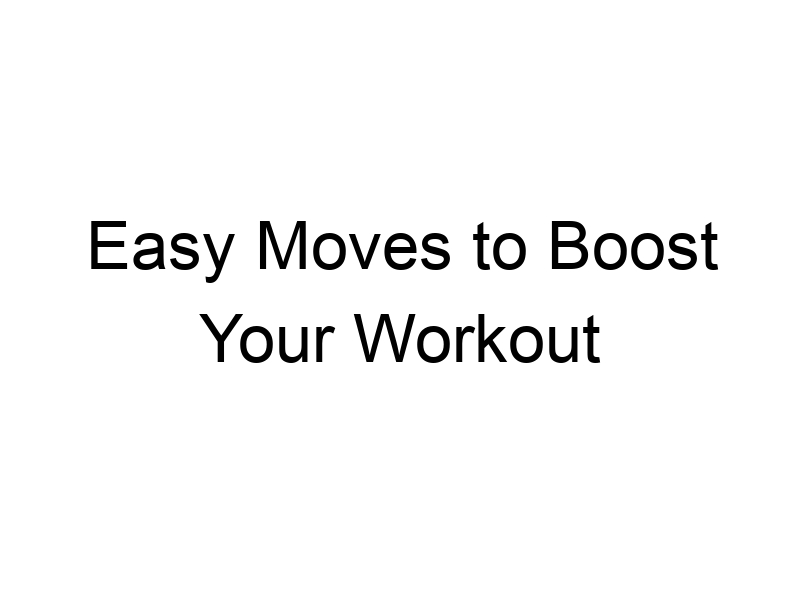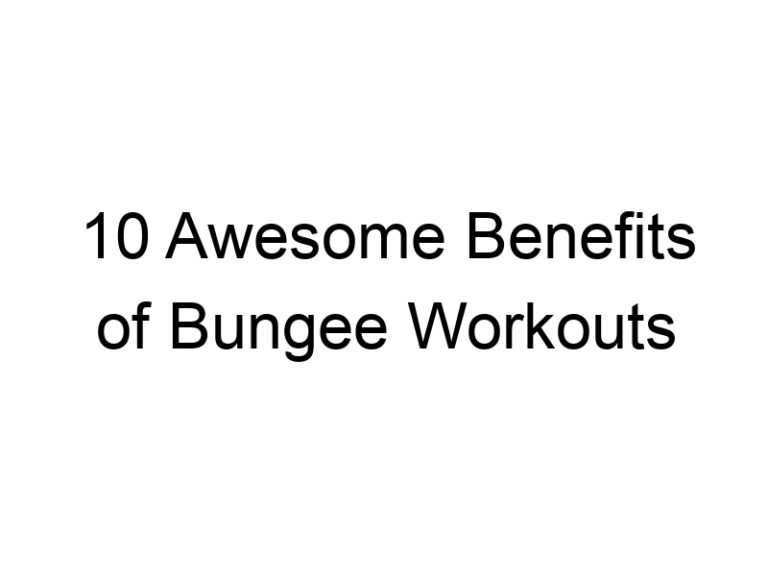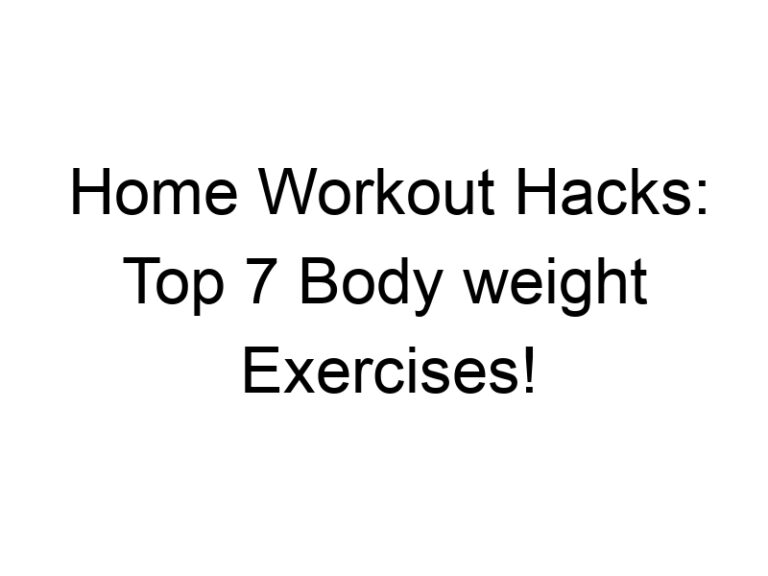Looking to spice up your workout routine without putting too much stress on your joints? Low-impact cardio exercises might be just what you need. They’re gentle on the body but still pack a punch when it comes to getting your heart rate up. Whether you’re just starting out or looking to add some variety to your fitness plan, these moves can fit right in. Let’s dive into some easy ways to boost your workout with low-impact cardio.
Key Takeaways
- Low-impact cardio is great for all fitness levels, offering a way to stay active without straining your joints.
- Incorporating these exercises into your routine can help improve cardiovascular health and overall fitness.
- Common low-impact moves include walking, swimming, cycling, and yoga.
- It’s important to maintain proper form to maximize benefits and reduce the risk of injury.
- Mixing up your routine with different low-impact exercises can keep your workouts fun and engaging.
Understanding Low-Impact Cardio Moves

Benefits of Low-Impact Exercises
Low-impact exercises, such as walking, cycling, and swimming, are a fantastic way to stay active without putting too much strain on your joints. These exercises help in maintaining cardiovascular health while reducing the risk of injury. They are ideal for people of all ages and fitness levels, especially those recovering from injuries or with chronic joint issues. By focusing on these activities, you can boost endurance, improve mood, and enhance overall well-being.
How to Incorporate Them Into Your Routine
Incorporating low-impact exercises into your daily routine doesn’t have to be complicated. Start with a 10-minute walk during your lunch break or a gentle cycling session after work. You can also try swimming laps at your local pool. Consistency is key. Aim for at least 150 minutes of moderate-intensity exercise weekly. Mix and match different activities to keep things interesting and prevent burnout.
Common Misconceptions
There are several misconceptions about low-impact exercises. Some people think they are less effective than high-intensity workouts, but this isn’t true. Low-impact doesn’t mean low-effort. You can still achieve significant fitness gains. Another myth is that these exercises are only for the elderly or injured, but they are beneficial for everyone. They provide a balanced approach to fitness, allowing you to build strength and endurance without overloading your body.
Embrace low-impact exercises as a sustainable way to maintain your fitness journey. They offer a gentle yet effective path to staying active and healthy.
Warm-Up Techniques for Effective Workouts

Warming up is like the appetizer before the main course of your workout. It preps your body, making sure you’re ready to go full throttle without getting hurt.
Importance of Warming Up
Warming up is super important because it gets your blood pumping and muscles ready for action. It also helps your mind focus on the workout ahead. Skipping this step is like driving a car without warming up the engine—you’re likely to stall. Plus, a good warm-up can actually improve your performance. So, don’t skip it!
Dynamic vs. Static Stretching
- Dynamic Stretching: This involves moving parts of your body and gradually increasing reach, speed, or both. It’s great because it mimics the movements you’ll do in your workout.
- Static Stretching: This is when you hold a stretch for a period of time. It’s best to do these after your workout when your muscles are warm.
Here’s a quick table to break it down:
| Type of Stretching | When to Do It | Benefits |
|---|---|---|
| Dynamic | Before | Increases range of motion, warms up muscles |
| Static | After | Improves flexibility, relaxes muscles |
Sample Warm-Up Routine
- Jog in Place: Start with a light jog for about 3-5 minutes to get your heart rate up.
- Arm Circles: Swing your arms in circles to loosen up your shoulders.
- Leg Swings: Swing each leg back and forth to get your hips moving.
- Hip Circles: Rotate your hips in circles to loosen them up.
“Starting your workout without a warm-up is like jumping into a pool without testing the water first. You might be in for a shock.”
For more ideas on effective warm-up exercises, check out these 18 effective warm-up exercises designed for beginners. They include arm circles, hip circles, leg swings, and jogging in place, among others. Perfect for getting you ready for action!
Mastering the Art of Walking Workouts
Walking for Cardio Health
Walking is one of the simplest and most effective ways to improve your cardio health. It’s not just for beginners; even those who are very fit can benefit from a good walking workout. A brisk walk can burn up to 500 calories per hour, making it a great option for losing weight and staying in shape. Start slow if you’re new to walking—maybe five to ten minutes at a time—and gradually increase your duration to at least 30 minutes per session.
Tips for an Effective Walking Routine
To make the most out of your walking routine, consider these tips:
- Check Your Form: Stand tall with a straight spine and relaxed shoulders. Choosing the right shoes is also crucial for comfort and support.
- Interval Training: Mix up your pace. Walk briskly for a minute or two, then slow down for a few minutes. This not only boosts your fitness level but also helps in burning more calories.
- Stay Consistent: Try to walk at the same time every day to build a habit. Consistency is key to seeing results.
Tracking Your Progress
Keeping track of your walking progress can be motivating. Consider using a fitness app or a simple pedometer to log your steps and distance. Set realistic goals and adjust them as you improve. Remember, it’s not just about the number of steps but also about enjoying the journey and staying active.
Exploring the Benefits of Swimming
Why Swimming is a Great Cardio Workout
Swimming is like a full-body workout disguised as fun. It combines cardio with muscle toning, making it a super-efficient exercise. When you swim, you work all your major muscle groups without the high impact on your joints that comes with running or jumping. Plus, the water resistance adds an extra challenge, helping you build strength and endurance. And let’s not forget about the calorie burn—swimming can torch calories quickly, making it a fantastic choice for weight management.
Techniques for Beginners
Starting with swimming can be a bit daunting, but with the right approach, it’s totally doable. Here are some tips for beginners:
- Start with the basics: Focus on mastering the basic strokes like freestyle and backstroke. These are easier to learn and will give you a solid foundation.
- Use swimming aids: Don’t shy away from using kickboards or fins. They’re great for building confidence and improving technique.
- Take it slow: Begin with short distances and gradually increase as you get more comfortable in the water.
Advanced Swimming Drills
For those who’ve got the basics down, advanced drills can take your swimming to the next level:
- Interval training: Mix fast laps with slower ones to boost your cardiovascular endurance.
- Pyramid sets: Swim increasing and then decreasing distances in a single session to challenge your stamina.
- Kickboard drills: Focus on leg strength by using a kickboard to isolate your lower body.
Swimming is not just about moving through water; it’s about finding your rhythm and pushing your limits. Whether you’re a beginner or a seasoned swimmer, there’s always room to improve and enjoy the process. Remember, consistency is key, and every lap counts.
Cycling: A Fun Way to Boost Cardio

Choosing the Right Bike
Picking the right bike isn’t as simple as it seems. First, consider where you’ll be riding. If you’re hitting the trails, a mountain bike is your best bet. For city commutes, a road bike or hybrid might be more your speed. It’s not just about style, though; comfort and fit matter too. Make sure the bike feels right when you sit on it. Your feet should touch the ground, and the handlebars should be within easy reach.
Safety Tips for Cyclists
Safety first, always. Wearing a helmet is non-negotiable. It’s the simplest way to protect yourself from head injuries. Also, be visible. Wear bright colors or reflective gear, especially if you’re riding at night. And don’t forget to check your brakes and tires before you set off. A quick once-over can save a lot of trouble later.
Incorporating Cycling Into Daily Life
Cycling is more than just exercise; it’s a lifestyle. Try biking to work or school instead of driving. Not only will you save on gas, but you’ll also get your workout in without hitting the gym. You can also make it a family affair. Plan weekend rides with your kids or friends. It’s a great way to bond and stay fit. And hey, cycling can help you better manage your heart rate zones, making it perfect for both steady rides and interval training sessions.
Dance Your Way to Fitness
Popular Dance Styles for Cardio
When it comes to dance fitness, the options are as varied as they are exciting. Zumba is a favorite, blending Latin rhythms with easy-to-follow moves for a lively workout. Then there’s hip hop, where you can groove to the beat while burning calories. For those who love a touch of elegance, ballet-inspired workouts provide a unique mix of grace and strength. Each style offers its own flavor and benefits, so there’s something for everyone.
Benefits of Dance Workouts
Dance workouts are not just about having fun; they pack a punch when it comes to fitness. First off, they improve your cardiovascular health by getting your heart rate up. They’re also fantastic for enhancing coordination and balance. Plus, dance is a mood booster, releasing endorphins that make you feel great. It’s a workout that doesn’t feel like work, which is why so many people stick with it.
How to Get Started
Starting a dance workout routine is simple. Here’s a quick guide:
- Choose Your Style: Decide which dance style excites you. Dance fitness combines various dance styles with low-impact exercises, making it an appealing workout option.
- Find a Class or Video: Look for local classes or online videos to follow along.
- Set a Schedule: Consistency is key, so set aside specific times each week for your dance sessions.
Dance is a fantastic way to break a sweat without it feeling like a chore. It’s about moving to the music and enjoying every step, making fitness fun and sustainable.
Yoga for Cardio and Flexibility
Yoga Poses for Cardio
Yoga isn’t just about twisting into pretzel shapes or finding inner peace. It’s also a fantastic way to get your heart pumping. Certain poses can really boost your cardio while also improving flexibility. Think of poses like the Sun Salutations, Warrior sequences, and even the humble Downward Dog. These poses engage multiple muscle groups and can elevate your heart rate, offering a cardio workout without the high impact. Plus, they can be adjusted for any fitness level, making them accessible to everyone.
Combining Yoga with Other Workouts
Mixing yoga with other types of workouts can be a game-changer. If you’re into running or cycling, adding yoga to your routine can help with muscle recovery and flexibility. It gives your body a break from the high impact while still keeping you active. You can do yoga on your rest days or even integrate short yoga sessions post-workout. This combination not only helps in preventing injuries but also enhances overall performance.
Mindfulness and Breathing Techniques
One of the best parts of yoga is the focus on breathing and mindfulness. These techniques can significantly improve your workout efficiency. By learning to control your breath, you can manage your energy levels better and maintain endurance. Mindfulness helps you stay present during your workouts, which can improve your form and prevent injuries. It’s like giving your mind a workout too, keeping stress at bay and enhancing your mental clarity.
When you bring together cardio and flexibility through yoga, you’re not just working out; you’re creating a holistic fitness experience that benefits both body and mind. It’s about finding balance and harmony in movement and breath.
Pilates: Strengthening and Cardio Combined
Core Exercises in Pilates
Pilates is all about the core. It’s not just about getting a six-pack; it’s about building a strong foundation for your body. Think of exercises like the plank and the “hundred”—they’re staples in Pilates for a reason. These moves focus on your core muscles, which support your spine and help with balance. If you’re new, start with the basics and gradually add more challenging exercises. Remember, consistency is key.
Pilates for Cardio Health
You might not think of Pilates as a cardio workout, but it can definitely get your heart rate up. By moving through exercises with precision and speed, you can turn a Pilates session into a cardio workout. Try doing a series of exercises without breaks in between. This not only keeps your heart pumping but also builds endurance. Pilates is a fantastic way to combine strength and cardio in one go.
Equipment vs. Mat Pilates
When it comes to Pilates, you have options: equipment or mat. Mat Pilates is accessible and can be done anywhere, while equipment Pilates uses tools like the reformer or the Cadillac. Each has its own benefits. Equipment Pilates offers resistance and can be more intense, while mat Pilates focuses on body weight and control. Whether you’re using a mat or machines, both forms of Pilates can enhance your workout and offer a full-body challenge.
Pilates is more than just exercise; it’s a practice that enhances both strength and flexibility. By integrating Pilates into your routine, you can improve posture, balance, and even mental health. It’s about quality over quantity, focusing on precise movements and controlled breathing.
Low-Impact Cardio Moves To Add to Your Workout Routine
Top Low-Impact Moves
Low-impact doesn’t mean low-effort. These exercises are gentle on your joints but still pack a punch. Here are some favorites:
- Marching in Place: Stand tall and lift your knees as if you’re marching. Swing your arms for added intensity. It’s a simple move, but it gets your heart rate up.
- Step Touch: Step to the side and touch your other foot to it. Add arm movements to increase the workout.
- Seated Jacks: Sit on a chair and mimic the motion of jumping jacks. It’s all the fun of jumping jacks without the impact.
Creating a Balanced Routine
Mixing low-impact moves into your routine can keep things fresh and exciting. Here’s how you can create a balanced workout:
- Warm-Up: Start with a gentle warm-up to get your muscles ready.
- Variety is Key: Combine different low-impact exercises to work various muscle groups.
- Cool Down: Finish with a cool-down to help your body recover.
Avoiding Common Mistakes
Even with low-impact moves, there are pitfalls to watch out for:
- Skipping Warm-Ups: Never jump straight into a workout. A good warm-up is essential.
- Ignoring Form: Proper form prevents injuries and ensures you get the most out of your workout.
- Overdoing It: Listen to your body. If something feels off, it’s okay to take a break.
Low-impact exercises offer a great way to stay active without putting too much strain on your body. They’re perfect for all fitness levels and can be easily adjusted to suit your needs. Remember, consistency is more important than intensity.
The Role of Nutrition in Cardio Workouts

Pre-Workout Nutrition Tips
When it comes to prepping for a cardio session, what you eat matters. Fueling your body right can make a big difference in how you perform. Start with a light meal or snack about 30-60 minutes before you hit the gym. Think of something that’s easy on the stomach but packed with energy. A banana with a scoop of peanut butter or a small bowl of oatmeal can do wonders. These foods provide carbs for energy and a bit of protein to keep you going strong.
Hydration and Cardio
Staying hydrated is crucial, especially when you’re sweating it out during cardio. Water is your best friend here. Make sure to drink plenty before, during, and after your workout. If you’re going for a long run or an intense session, consider an electrolyte drink to replenish what you lose in sweat. But don’t overdo it—listen to your body and drink when you’re thirsty.
Post-Workout Recovery Foods
After a tough workout, your body needs to recover. This is where post-workout nutrition comes in. Aim to eat a meal rich in protein and carbohydrates within two hours after exercising. A grilled chicken sandwich or a protein shake with some fruit can help repair muscles and restore energy levels. Remember, recovery is just as important as the workout itself.
Eating the right foods around your workouts isn’t just about performance—it’s about feeling good and staying healthy. Pay attention to what your body needs, and you’ll see the benefits in your cardio workouts.
Tracking Your Cardio Progress
Using Fitness Apps
Fitness apps are like having a personal trainer in your pocket. They offer a convenient way to keep tabs on your cardio workouts. With features like GPS tracking, heart rate monitoring, and progress charts, these apps make it easy to see how far you’ve come. Consistency is key, and having a digital record of your workouts can help you stay on track. Plus, many apps let you set reminders, so you never miss a session.
Setting Realistic Goals
Setting goals is essential, but they need to be realistic. Start small and gradually increase your targets. For instance, if you’re beginning with a walking routine, aim for 10 minutes at a time. Once you’re comfortable, gradually increase your pace until you can maintain a conversation without becoming breathless. Begin by walking for 10 minutes and work your way up. Celebrate small wins to keep motivation high.
Adjusting Your Routine Over Time
As you progress, your cardio routine should evolve too. This means mixing up your workouts to avoid hitting a plateau. Try different activities like cycling, swimming, or even dance workouts. Keep an eye on how your body responds and make adjustments as needed. If something feels off, it might be time to tweak your routine or try something new.
“Your fitness journey is unique to you. Listen to your body, and don’t be afraid to make changes. Progress, not perfection, is the goal.”
Wrapping It Up
So there you have it, some easy moves to give your workout a little boost. Whether you’re just starting out or have been at it for a while, these exercises can fit right into your routine. Remember, it’s not about doing everything perfectly but about getting a little better each day. Keep it simple, stay consistent, and most importantly, have fun with it. Your body will thank you later. Now, go on and break a sweat!
Frequently Asked Questions
What are low-impact cardio exercises?
Low-impact cardio exercises are workouts that are easy on the joints, such as walking, swimming, and cycling. They help improve heart health without putting too much stress on your body.
Why is warming up important before exercising?
Warming up is important because it prepares your muscles and joints for more intense activity. It helps prevent injuries and makes your workout more effective.
How can I make walking a more effective workout?
To make walking more effective, try increasing your pace, adding intervals of faster walking, or incorporating hills into your route. This will help boost your heart rate and burn more calories.
What makes swimming a good cardio exercise?
Swimming is a great cardio exercise because it works your whole body and is gentle on the joints. It helps improve endurance, strength, and flexibility.
How can I safely start cycling as a workout?
To start cycling safely, choose the right bike for your needs, wear a helmet, and follow traffic rules. Begin with short rides and gradually increase your distance as you get more comfortable.
What are the benefits of dance workouts?
Dance workouts are fun and help improve your cardiovascular health, coordination, and flexibility. They also boost your mood and can be a great way to socialize.
How does yoga contribute to cardio fitness?
Yoga contributes to cardio fitness by improving your breathing and increasing your heart rate during certain poses. It also helps with flexibility and mental focus.
What should I eat before and after a cardio workout?
Before a cardio workout, eat a light snack with carbs and protein for energy. After working out, refuel with a meal that includes protein and healthy carbs to help your muscles recover.







